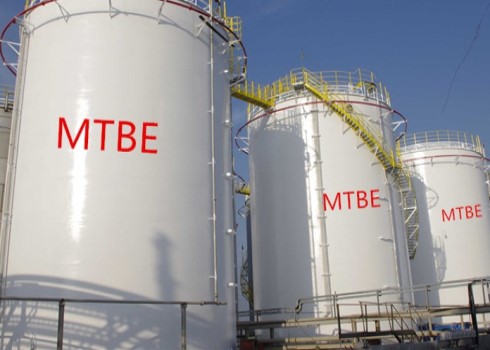
WHY IS MTBE USED AS A FUEL ADDITIVE?
Methyl tertiary-butyl ether (MTBE) is a chemical compound made from a chemical reaction of
methanol and isobutylene. At one time, MTBE was produced in very large quantities and was
used primarily as a fuel additive in gasoline. During the summer of 2006, the gasoline refiners
phased MTBE out of Maryland’s gasoline and replaced it with ethanol.
MTBE replaced lead as an octane enhancer to help prevent gasoline engines from “knocking.”
MTBE is known as an oxygenate because it raises the oxygen content of gasoline. Oxygen helps
gasoline burn more completely, thereby reducing harmful tailpipe emissions from motor
vehicles. Most refiners used MTBE in higher concentrations over other oxygenates primarily for
its blending characteristics to fulfill some requirements set by Congress in the 1990 Clean Air
Act Amendments. MTBE became more prevalently used in the Baltimore-Washington
Metropolitan region in 1995 when the Clean Air Act required areas with the worst ground-level
ozone air pollution to reduce emissions of pollutants that form ground-level ozone by using
reformulated, or oxygenated, gasoline. This continued until the summer of 2006 when ethanol
replaced MTBE as the primary oxygenate used by gasoline refiners.
WHY IS MTBE AN ENVIRONMENTAL CONCERN?
MTBE is more soluble and mobile in water, has a smaller molecular size, and is less
biodegradable than other gasoline components. MTBE can become introduced into the
environment, particularly to water, from leaking underground and above ground petroleum
storage tank (USTs and ASTs) systems through liquid and vapor releases. Other sources of
MTBE include atmospheric deposition, storm water runoff, watercraft, and residential fuel use.
HOW PEOPLE ARE EXPOSED TO MTBE?
MTBE is found in some water sources, mainly in urban areas with leaking underground gasoline storage tanks.
MTBE also has been detected in the air near some fuel facilities, in the air of cities where MTBE is still used in gasoline,
and in the air around gas stations when people are fueling their vehicles. People can be exposed to MTBE by breathing
contaminated air and drinking contaminated water. Workers in industries that produce and transport MTBE or treat
gasoline may have increased exposures.
IS MTBE A HEALTH CONCERN?
The U.S. Environmental Protection Agency (EPA) reviewed all available information and
concluded that there was insufficient data to quantify health risks from low-level MTBE
exposures in drinking water. EPA’s health advisory, issued in December 1997, states that levels
of contamination at or below 20 to 40 parts per billion (ppb) provides a large margin of safety
from toxic effects and that water would not have an unpleasant taste and odor. In 1999, an EPA
Panel investigated concerns about MTBE in drinking water supplies. The Panel recommended
that EPA work with Congress and the states to implement reforms to protect drinking water supplies from MTBE while maintaining air pollution reductions.
Specific Panel recommendations included:
1-Substantially reducing the use of MTBE while ensuring no loss in air quality benefits;
2- Enhancing public drinking water monitoring, assessment, and protection programs;
3- Enhancing enforcement of UST upgrade or replacement programs; and
4- Enhancing programs for public education and clean-up of gasoline spills.

